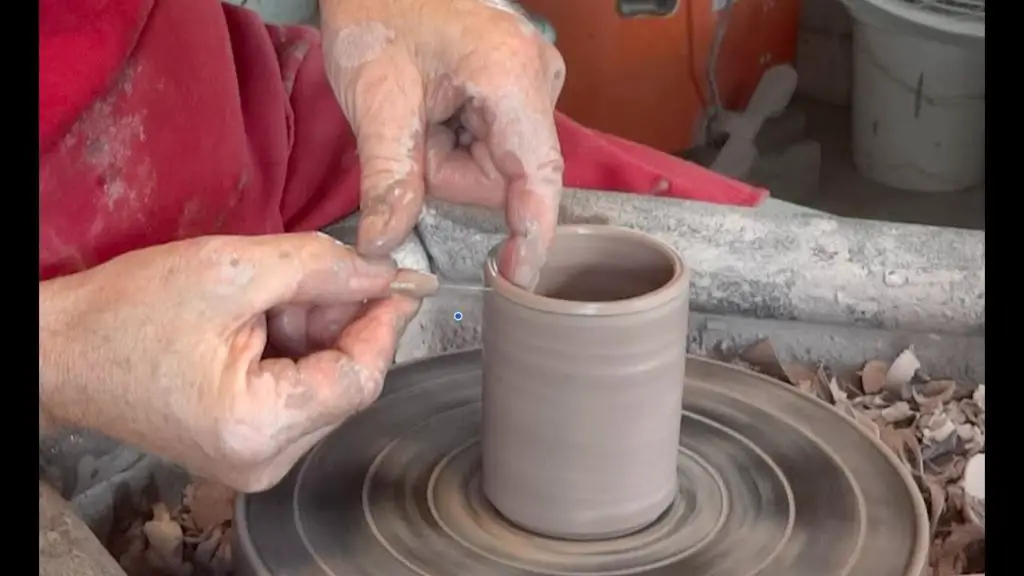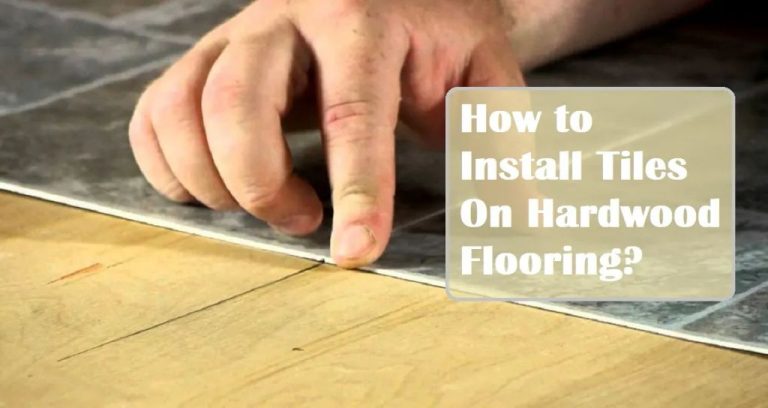What Is The Most Used Tool In Ceramics?
Ceramics refers to objects made from clay that are hardened by heat. Ceramics include pottery, tableware, bricks, tiles, and more. There are many tools used in ceramic arts and pottery to shape, cut, join, smooth, scrape, store, and decorate clay pieces.
Some of the most common and essential ceramic and pottery tools include:
Potter’s Wheel
The potter’s wheel is considered the most essential tool in ceramics and has been used for thousands of years to create pottery. Evidence shows the potter’s wheel first emerged around 3500-4000 BC in ancient Mesopotamia, specifically the Sumerian city of Ur [1]. Early wheels were made of stone and powered by hand or foot to spin the wheel head. Over time, wheels evolved to add momentum with flywheels, convert human power to mechanical power with kick wheels, and eventually utilize electric motors [2].
Today’s potter’s wheels enable clay to be centered and shaped into symmetrical forms with ease. The main components are the wheel head, wheel stand, and power source. Wheel heads can be manual, kick, or electric driven. Electric wheels offer variable speed control for slower sculpting or faster throwing. The wheel head, bats, splash pans, and stool height are also adjustable to accommodate each potter’s needs and preferences. From beginner to expert, potters worldwide rely on the potter’s wheel to efficiently produce functional and artistic ceramic ware.
Kiln
The kiln is essential equipment in ceramic production and is used to complete the firing process. The purpose of the kiln is to heat clay and ceramic products to high temperatures in order to permanently harden them through a process called “vitrification.”
There are several types of kilns used in ceramic production:
- Electric kilns – The most common type, electric kilns use heating elements to generate heat and allow precise control over firing.
- Gas kilns – Gas kilns use natural gas or propane as fuel. They can reach higher temperatures faster than electric kilns.
- Wood-fired kilns – Traditionally wood-fired, these kilns use wood as the fuel source. Firing can take days and results in natural effects on the clay.
- Raku kilns – Small, portable kilns used for raku firing, which involves removing pottery at red heat for artistic effects.
The firing process entails gradually raising the temperature in the kiln according to a schedule and then cooling the kiln slowly. Different firing methods like bisque firing, glaze firing, and raku firing involve unique steps in the kiln.
Proper heatwork in the kiln results in the sintering and vitrification of clay, creating durable ceramic material. Factors like temperature, atmosphere, and duration in the kiln all affect the characteristics and quality of the finished pottery (https://ceramicartsnetwork.org/daily/article/A-Guide-to-Ceramic-Kilns-and-Firing-Methods).
Clay Wire
Clay wire is an essential tool for joining pieces of clay together and creating structure in ceramic projects. It consists of a thin coil of clay that has been rolled out and slightly dried. Clay wire acts as an adhesive to literally “weld” wet clay pieces together.
There are two rules for successfully joining clay with clay wire:The Two Rules Of Joining Clay. First, the wire and the pieces being joined must be at a similar level of dryness. If the wire is too wet or too dry compared to the clay pieces, it will not bond properly. Second, pressure must be applied along the entire length of the wire to mesh and blend it with the clay pieces.
To use clay wire, roll out a coil and allow it to dry slightly until it’s leather hard. Cut the wire to the desired length. Score both the wire and the clay surfaces to be joined. Apply water or slip to the scored areas. Place the wire along the seam, pressing firmly along the entire length to soften, blend and seal the pieces together. Clay wire creates a strong structural join.
Ribs & Kidneys
Ribs and kidneys are essential hand tools used for smoothing and shaping clay objects in ceramics. They are made of wood, plastic or metal and come in various sizes and shapes.
Ribs have a rounded edge and are used to compress and smooth clay. They help remove wrinkles and shape curved surfaces. Plastic ribs are more flexible while metal ribs are rigid. Wide ribs cover more surface area while thinner ribs give more control.
Kidneys are curved tools used to smooth concave areas that a rib can’t reach. They are useful for smoothing bowls, vases, cups and other vessels with indentations. The different curves and shapes of kidneys allow accessing tight crevices.
Using ribs and kidneys together enables potters to refine the shape and surface of clay forms. The tools compress the clay body, close up holes, and give smooth finishes. They are essential for creating clean lines and elegant curves in ceramics work.
Needle Tool
The needle tool is one of the most versatile tools used in ceramics and pottery making. As the name suggests, it has a sharp, needle-like tip that allows for precise detailing and engraving in clay. Needle tools are commonly made from stainless steel and come in a variety of sizes and shapes.

One of the primary uses of a needle tool is for cutting, piercing and incising designs into leather hard clay. The sharp tip can create fine lines and intricate patterns not easily achieved with other tools. Needle tools allow artists to add decorative elements like texture, line work, and detailing to their clay pieces with control and accuracy.
In addition to engraving and detailing, needle tools have many other uses. They are useful for measuring the depth of clay pieces like bowls and vases. Needle tools can also aid in joining two pieces of clay by scoring the surface before attaching slip or water. The tip can precisely trim away excess clay and refine details. Needle tools are even helpful in finishing processes, like removing bits of dried glaze from hard to reach areas after firing.
With versatility across most stages of the ceramic process, from shaping to decorating to finishing, the needle tool is one of the most utilized in a potter’s toolkit. Needle Tools allow for both broad strokes and intricate details not easily achievable otherwise.
Sponge
A sponge is an essential tool for smoothing the surface of clay and blending joins. Sponges have an open cell structure that allows them to absorb water. This makes them ideal for working with clay in different stages of dryness.
When clay is partially dry or starting to stiffen up, a damp sponge can gently smooth the surface and remove any fingerprints or rough areas. Using a light sweeping motion, the sponge will soften the clay just enough to refine the surface without disrupting the form. A sponge is also useful for smoothing seams and joints when attaching two pieces of clay. Dampening the join area will allow the pieces to perfectly blend together.
For clay that is still wet and pliable, a sponge can be used to gently compress and refine surfaces. Wringing the sponge to remove excess water will prevent over-softening of the clay. The sponge can also be used in a stippling technique, quickly tapping it on wet clay to build up consistent texture.
Sponges come in a variety of shapes and sizes. A basic square sponge is good for accessing tight areas and smoothing interior surfaces. A large sea sponge has more overall coverage for big projects. Having a few different sponge tools available allows the ceramic artist to achieve very refined results.
Fettling Knife
Fettling knives are an essential tool used for cutting, scraping, and trimming clay in ceramics. These knives have a half-moon shaped blade with a beveled edge that allows for detailed and precision work on clay surfaces. The blade is typically made of flexible steel or carbon, providing strength and durability while still being thin enough for intricate clay refinements.
Fettling knives are ideal for removing excess clay and imperfections on the surface of pottery pieces. The sharp, curved blade can slice through clay with ease, shaving off rough areas and edges. Scraping the surface in smooth strokes evens out uneven surfaces and seams on assembled pieces. Fettling knives give ceramists greater control and dexterity in their detailing work compared to bulkier knives.
In addition to smoothing and refining surfaces, fettling knives excel at cutting and trimming clay. Their sharp edges make quick work of slicing through soft clay. Curves and decorative elements can be precisely shaped and cut to size. Fettling knives provide the accuracy required for intricate clay work, unlike basic kitchen or craft knives. The thin profile of the blade allows access into tight areas and delicate detailing.
From smoothing seams and contours to precision cutting and trimming, fettling knives are an indispensable ceramic studio tool. Their specialized blades are designed to handle the unique demands of wet and soft clay mediums. No ceramicist’s toolkit would be complete without this versatile trimming and detailing knife.
Rolling Pin
A rolling pin is an essential tool used for flattening and rolling out clay in ceramics and pottery. The rolling pin allows potters to evenly roll out slabs and sheets of clay to a uniform thickness. This is important for making flat pieces like tiles or plates, as well as getting an even thickness when creating bowl and vessel forms.
Rolling pins come in various materials and sizes. Acrylic and wooden rolling pins are common. Some rolling pins have handles on the ends, while others are just a cylinder without handles. The plain cylindrical pins tend to give the most control over applying even pressure across the clay. Larger rolling pins work well for rolling out substantial slabs, while smaller sizes help when rolling details on smaller projects.
Using a rolling pin takes practice to learn the right amount of pressure and technique to roll the clay without sticking or tearing. Keeping the clay lubricated with water and maintaining an even rhythm helps the rolling pin glide smoothly over the surface. Rolling in different directions and frequently rotating the clay ensures the slab remains evenly flattened as the clay’s thickness is reduced.
Once the clay is rolled out to the desired thinness, the rolling pin has done its job. This simple but essential tool creates the foundation many ceramic pieces are built upon.
Conclusion
Some of the most important tools in ceramics:
- Potter’s wheel for forming pots and shapes
- Kiln for firing pieces
- Clay wire for lifting and separating
- Rib and kidney tools for smoothing surfaces
- Needle tool for cleaning
- Sponge for wetting and texturing
- Fettling knife for trimming
- Rolling pin for flattening
These tools allow ceramists to create functional and artistic clay pieces. The potter’s wheel and kiln enable shaping and hardening the clay. Tools like ribs, sponges, and knives help refine surfaces and forms. While not exhaustive, this covers some of the most essential implements used regularly in ceramic arts. Their thoughtful and skilled application is key to producing quality ceramic works.


